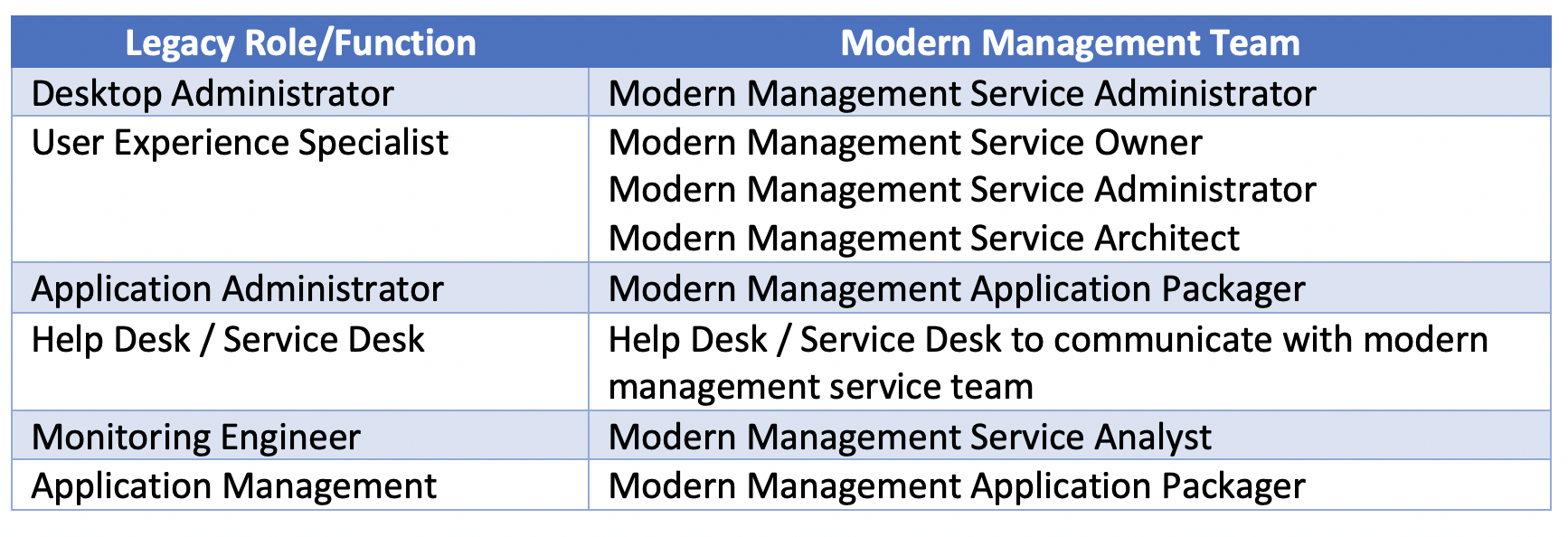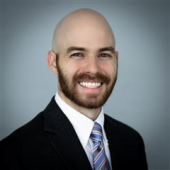The change from legacy PC lifecycle management (PCLM) tools to Windows 10 Modern Management can be a major one. Most organizations tend to focus on the technology challenges associated with this transition: How will I evolve from GPOs to device or user profiles? How will I get out of the business of imaging devices? How will updates be handled and managed?
These considerations are both valid and significant. However, many firms fail in the transition to modern management because they ignore their most valuable resource: their people!
When moving away from PCLM tools and towards a modern system such as Workspace ONE UEM, the skills, processes, education, and tasks of your IT workforce must evolve. Firms that take the “figure it out later” approach generally do just that: They work through these changes slowly, painfully, and expensively. We highly recommend making people and process design every bit as significant in your transition planning as technology and architecture design.
At VMware, we have seen following high-level organizational model for Windows 10 Modern Management teams function most effectively.

Windows 10 Service Owner:
- This individual owns the end-to-end modern management service, interfaces with lines of business, negotiates SLAs, confirms compliance, and manages communication to stakeholders.
Windows 10 Service Architect:
- This individual owns and maintains the overall modern management architecture, sets standards for those services, architects new service offers to end users, and guides continuous improvement of the system.
Windows 10 Application Architect:
- This individual maintains all aspects of application delivery and has a comprehensive understanding of app stacks relating to modern platforms.
Windows 10 Service Administrator:
- This individual manages day-to-day tasks within Workspace ONE UEM such as user groups, policies, and compliance rules, as well as working with the service and application architects to implement new use-cases and configurations.
Windows 10 Service Analyst:
- This individual monitors the end-user experience and confirms technical compliance with published SLAs. He or she also drives completion of support escalations and root cause analyses.
Windows 10 Service Assurance:
- This individual helps develop and carry out the testing plan for current and future configurations and version upgrades.
When reviewing this structure at organizations, the most common question is, “What if we don’t have that many people?” or “We just have a few people that manage all of that.” This is a valid concern. A single person can play multiple roles in this structure, but all the roles need to have associated names to be successful. Even if your Workspace ONE UEM infrastructure is hosted in the cloud, building a modern management team is just as significant.
When making the transition from PCLM to modern management with regards to personnel and skilling, companies often find that the following changes cause the least friction and reduce changeover time.

Don’t forget about additional training and education as well. Proactively working with your team members to attend training courses can greatly reduce the stress and concern often caused with role transition. Taking into account cultural, organizational, and generational differences can also go a long way towards fostering the type of collaboration that is so crucial to building a high-functioning modern management team. We will focus more on building collaborative, cross-boundary teams in a future blog entry.
To see how VMware Professional Services can help with all the people, process, and technology aspects of your modern management transition with Workspace ONE UEM, please contact your VMware sales rep.
About the Author
 Roy D. McCord is a Staff Architect with VMware’s Professional Services Engineering team. He is responsible for architecting, building, and maintaining VMware’s End User Computing global portfolio of professional services offerings. Roy has previously worked as a team leader within the Workspace ONE consulting team and helped to build the practice from the ground up. He holds BS, MS, and MBA degrees from the Georgia Institute of Technology in Atlanta, GA. Roy resides in Alpharetta, Georgia.
Roy D. McCord is a Staff Architect with VMware’s Professional Services Engineering team. He is responsible for architecting, building, and maintaining VMware’s End User Computing global portfolio of professional services offerings. Roy has previously worked as a team leader within the Workspace ONE consulting team and helped to build the practice from the ground up. He holds BS, MS, and MBA degrees from the Georgia Institute of Technology in Atlanta, GA. Roy resides in Alpharetta, Georgia.






